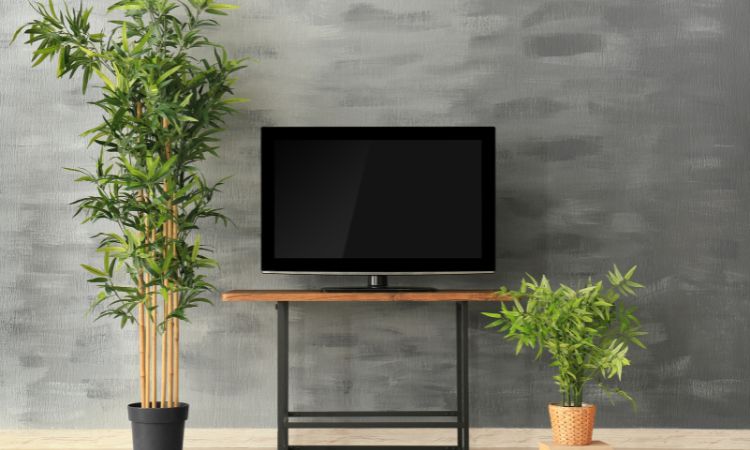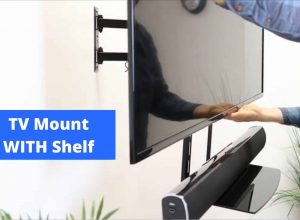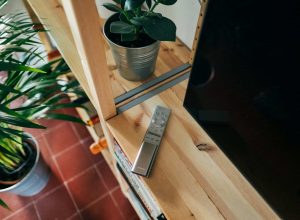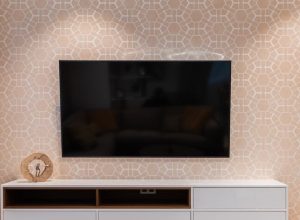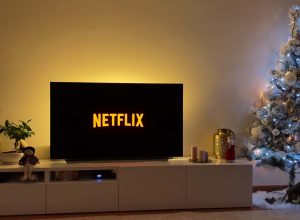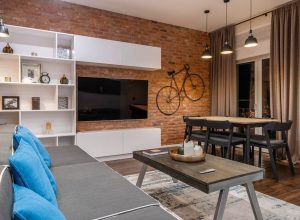Table could not be displayed.
Rotating TV mounts are the best choice when you need the most space-conserving yet efficient way to keep your TV safe.
Of course, unlike when you hold the TV on a table, a rotating wall mount will not restrict the movement or viewing angles. Based on the TV mount you have chosen, you may have many options like rotating, tilting, swivel, and level adjustment.
If you live in a compact space or have a residential place where you could place the TV at different angles, you can benefit from a rotating TV mount. But of course, you should get your hands on one of the best rotating TV mounts out there.
There are a couple of reasons you may find it challenging to find the best rotating TV mount for your home or office. First, there are so many rotating TV mount models in the market right now. Second, most of these models have multiple adjustment options like rotation, swivel, level change, etc.
Therefore, even when you have narrowed things down to a specific set of features, you will have to choose from a collection of no less than hundreds of options. Do not worry, though. We have got you covered here.
In the following guide, we have prepared a list of the best rotating TV mounts you can find in today’s market.
We understand that different people look for different things in such a device. For instance, some people are looking for best-in-class build quality, while others need various adjustment options.
On the other hand, some users prioritize extension options as well. So, of course, we cannot make an infinite list, and we did have to bring the selection to only five options. Because we understand this restriction, we have tried to pick at least an excellent rotating TV mount from each category.
 Specs:
Specs:
 Specs:
Specs:
 Specs:
Specs:
 Specs:
Specs:
 Specs:
Specs:

 If the TV seems to tilt forward when attached to the stand, the assembly screws securing it to the frame should probably be tightened. But, the good news is that once you’ve installed a plasma, LED, or LCD television on a wall, you’re unlikely to need to move or replace it.
However, there are occasions when you want or need to adjust your viewing angle, either because the light from the television produces light or because you’re sitting in a different position than usual.
On the other hand, inclining TV mounts are specifically built to enable rapid viewing angle adjustment. And, although the technique varies by brand, the overall process is very similar.
If the TV seems to tilt forward when attached to the stand, the assembly screws securing it to the frame should probably be tightened. But, the good news is that once you’ve installed a plasma, LED, or LCD television on a wall, you’re unlikely to need to move or replace it.
However, there are occasions when you want or need to adjust your viewing angle, either because the light from the television produces light or because you’re sitting in a different position than usual.
On the other hand, inclining TV mounts are specifically built to enable rapid viewing angle adjustment. And, although the technique varies by brand, the overall process is very similar.
Best Rotating TV Mount
- Mount-It Dual Rotating TV Mount
- Mount-It TV Ceiling Mount Bracket
- Monoprice Cornerstone Series Full-Motion TV Wall Mount Bracket
- Pipishell Full Motion TV Monitor Wall Mount Bracket
- BLUE STONE Full Motion TV Wall Mount Bracket
#1 Winner: Mount-It Dual Rotating TV Mount
 Specs:
Specs:
- TV Size: 37 to 75 inches
- Minimum Compatible Size: 37 inches
- Tilt Angle: +20 and -20 degrees
Pros
- An incredible tilt angle range of +20 and -20 degrees
- Premium build quality using alloy steel construction
- The TV mount can handle up to 350lbs of the total weight
- Advanced swivel and rotation options for both TVs
- Built-in options for cable management and arrangement
Cons
- It does not work with smaller-sized TV models
- The package does not include a bubble level or HDMI cables
#2 Runner-up: Mount-It TV Ceiling Mount Bracket
 Specs:
Specs:
- TV Size: 32 to 75 inches
- Minimum Compatible Size: 32 inches
- Tilt Angle: -25 degrees
Pros
- Premium build quality that uses high-quality alloy steel
- Telescopic height adjustment to up to 35.8 inches
- Built-in cable management options inside the package
- Full motion management with a downward tilt of 25 degrees
- Adjustable ceiling plate with up to 60 degrees tilt
Cons
- It lacks upward tilt options for the display
- Not suitable for some build scenarios
#3 Alternative: Monoprice Cornerstone Series Full-Motion TV Wall Mount Bracket
 Specs:
Specs:
- TV Size: 37 to 70 inches
- Minimum Compatible Size: 37 inches
- Tilt Angle: -8 and +5 degrees
Pros
- Dual-arm design can increase the amount of weight the mount can handle
- The system comes with plenty of swivel, tilt, and arrangement options
- The design allows different installation scenarios, including corner installation
- VESA compatible installation makes sure that you can accommodate more models
- Compared to other products, it does not cost a lot
Cons
- Limited support for VESA-based design mount
- It is not suitable for ceiling-based TV mount
#4 Alternative: Pipishell Full Motion TV Monitor Wall Mount Bracket
 Specs:
Specs:
- TV Size: 13 to 42 inches
- Minimum Compatible Size: 42 inches
- Tilt Angle: +5 and -15 degrees
Pros
- The product works with flat and curved TVs
- You can use the mount for TVs as small as 13 inches
- Despite the small design, it offers maximum flexibility
- Advanced VESA mount support up to 200x200mm
- It can handle weight up to 44lbs
Cons
- The size compatibility range is limited
- It lacks extension options
#5 Alternative: BLUE STONE Full Motion TV Wall Mount Bracket
 Specs:
Specs:
- TV Size: 27 to 65 inches
- Minimum Compatible Size: 27 inches
- Tilt Angle: +3 and -15 degrees
Pros
- The rotating TV mount does not cost a lot
- Enhanced compatibility up to 65 inches
- Post-installation level adjustment of up to 3 degrees
- Top-of-of-the-line construction quality
- It comes with a 10-year warranty
Cons
- It does not have any extension option
- Lacks 360-degree swivel rotation options
Rotating TV Mount FAQ

What type of TV wall mount is best?
Types of TV wall mounts:Low-Profile/Fixed Wall Mount Brackets
Compared to tilting and full-motion wall mounts, low-profile wall TV brackets are usually the simplest to install and the least expensive option. It is just slightly more challenging to put a low-profile mount on a wall than hanging a large screen on a wall.Tilting Wall Mount Brackets
For low-profile TV mounting, tilted wall brackets are more expensive than fixed wall mountings but are usually cheaper than full movement installations. Tilting wall mounts are just as simple to install as low-profile wall mounts in terms of function. One of the primary differences between a tilting wall mount and a low-profile wall mount is that a tilting wall mount allows for adjustment of the TV’s vertical viewing angle.Full-Motion Wall Mount Brackets
As the name suggests, full-motion wall mounts allow for complete mobility. However, this change comes at a cost. They are not only movable wall mounts but are more expensive than standard wall mounts. Yet, they are also more challenging to install. Two or three people are required to hang the TV on the wall mount bracket for security reasons.Ceiling Mount Brackets
When your television is mounted on the wall, the most practical option is to utilize a ceiling mount. Because deck mounts are attached to the ceiling, they may rotate and tilt in any direction, allowing them to be used virtually anyplace. When living space is limited, a ceiling mount is an excellent alternative to explore.Should a wall-mounted TV be tilted?
Tilting the television downward when it is directly in front of the viewer’s face may reduce neck and eye strain. If your lights are in an inaccessible position, tilting the screen can minimize their light. A tilted screen may be desirable, depending on the space’s design style. Before you make a choice, let’s review some of the unique features of tilting wall mounts.Pros
- After a few minutes of watching television, you may realize that the TV is set too high. Tilt the chair lower if possible to see if this relieves any discomfort. You may want to adjust the height; however, a sloping wall mount simplifies this procedure.
- If your house is subjected to sun glare, an adjustable TV mount allows you to tilt the screen as many times as necessary. You can pitch your television to adjust to changing lighting conditions simply by using a slanted mount.
- You may need to raise the television due to the height of the fireplace. A slanted mount may provide greater flexibility if your television is installed in an unusual position, such as a corner or other difficult situation.
Cons
- While full-motion wall mounts provide a more comprehensive range of motion than flat ones, they are more expensive. However, you may not need the entire range of action reserved for installing a television in a restricted area such as a nook. Each piece of home equipment, including the slanted mount, is a unique tool to address a specific set of issues.
- While installing a slanted mount is more challenging than installing a flat mount, hardware makers design these systems for most homeowners to install. While it may first seem challenging, just following the directions will guarantee your success.
- A television’s “picture frame” attracts individuals since it blends in better with the surrounding. A portion of the attraction of a slanted mount is lost due to the distance between the mount and the wall.
How do I stop my TV from leaning forward?
 If the TV seems to tilt forward when attached to the stand, the assembly screws securing it to the frame should probably be tightened. But, the good news is that once you’ve installed a plasma, LED, or LCD television on a wall, you’re unlikely to need to move or replace it.
However, there are occasions when you want or need to adjust your viewing angle, either because the light from the television produces light or because you’re sitting in a different position than usual.
On the other hand, inclining TV mounts are specifically built to enable rapid viewing angle adjustment. And, although the technique varies by brand, the overall process is very similar.
If the TV seems to tilt forward when attached to the stand, the assembly screws securing it to the frame should probably be tightened. But, the good news is that once you’ve installed a plasma, LED, or LCD television on a wall, you’re unlikely to need to move or replace it.
However, there are occasions when you want or need to adjust your viewing angle, either because the light from the television produces light or because you’re sitting in a different position than usual.
On the other hand, inclining TV mounts are specifically built to enable rapid viewing angle adjustment. And, although the technique varies by brand, the overall process is very similar.
- Tight buttons are located on the brackets connected to the back of your television and may be accessed by looking underneath the TV. Depending on the brand and model of your tilting wall mount, it may feature a knob on both sides or only one.
- Take them in the other direction to release the tension knobs. Take care to hold your television with one hand while loosening the screws to prevent it from tilting too quickly.
- Now, gently move the top of the television; and shift the bottom.
- Then move your screen clockwise to tighten the screws and restore the television to its position.
- And in this way, you can stop TV from leaning forward.
Why does my flat-screen TV lean forward?
It is possible that the screen on your television is not straight due to an alignment problem. Perform the following checks to discover whether your television is out of alignment:- Position the television face down on a level, solid surface, with the stand facing the audience.
- Tighten the four screws on the table stand using a screwdriver
- Determine that the television’s back is facing you and that it is upright.
- Verify that there is no space between the television and the television stand.
- Both the screen and the frame are level with one another.
- If there is a gap between the TV and the table stand’s neck, the table stand may not be appropriately connected to the TV.
- Before putting the television face down on a flat, solid surface, ensure that the television faces you, and the stand is orientated in your direction.
- Unscrew the four screws that hold the TV table stand together and remove the TV table stand from the TV.
- Before inserting the four screws, check to ensure they are not pointing from the holes in any way.
- Once the stand is connected to the television, use a screwdriver to tighten the four screws.
Conclusion
As you may have noticed, choosing a random rotating TV mount will not help your living room when it comes to saving space. Instead, you have to ensure that the mount has all the features you are looking for. For instance, having a rotating TV mount with adjustable ceiling angles is a must when you want to get the perfect angle and height for the TV. Similarly, the TV mount must have additional height adjustment for maximum flexibility. We believe our collection will help you pick the best one. Looking to find an expert to mount your TV? We offer service local to you, click here to visit our tv mounting service page today!Adam F.
A/V and Home Theater Expert that focuses on providing clear as well as concise reviews for anything and everything Audio Visual. From TV's, TV Mounts, Soundbars, and Wiring, my focus is to provide expertise in everything Audio Visual focused.


